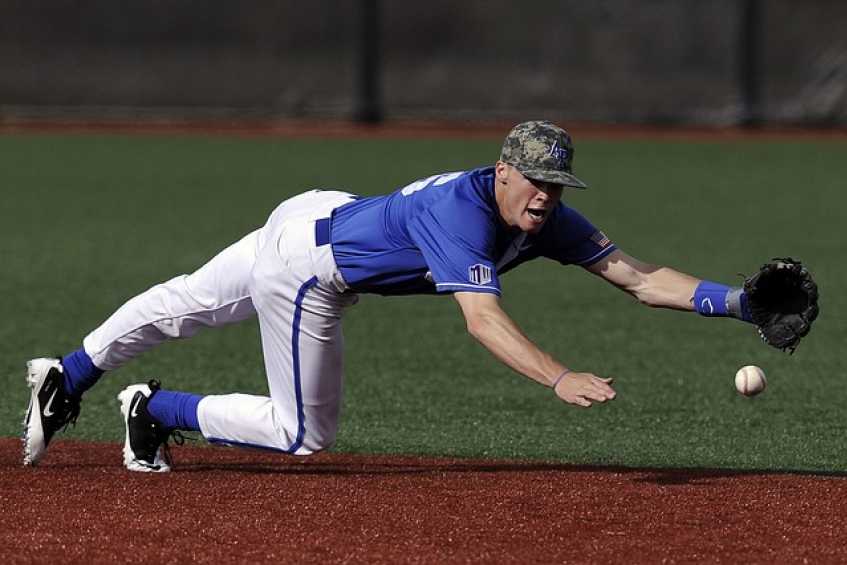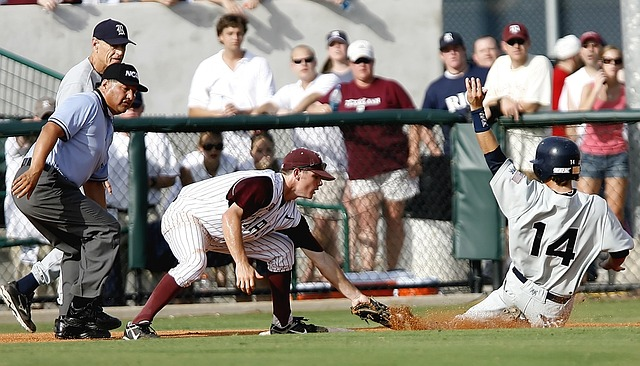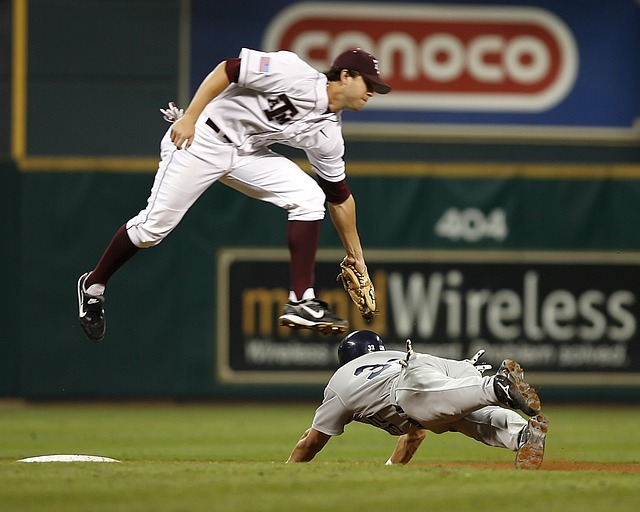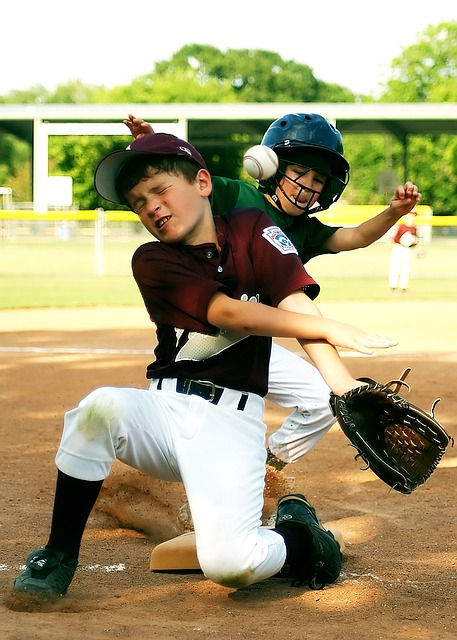
Welcome, fellow baseball enthusiasts, to a comprehensive guide on the art of fielding a ground ball. Whether you're a novice player seeking to develop fundamental skills or a seasoned athlete aiming to refine your technique, this blog post is designed to equip you with the knowledge and strategies needed to excel on the field.
In the game of baseball, fielding a ground ball holds immense significance. It is during these critical moments that players are required to demonstrate quick thinking, sharp reflexes, and impeccable execution. However, fear not, as we will meticulously break down the essential components of proper baseball ground ball fielding.
Throughout this in-depth guide, we will explore both the mental and physical aspects of fielding a ground ball. We will delve into the nuances of anticipation, understanding the game situation, and positioning oneself to make precise plays. Furthermore, we will provide you with the necessary tools to execute flawless techniques, including footwork, hand positioning, and body mechanics.
Rest assured, this is not your ordinary instructional piece. While we remain focused on delivering valuable insights, our aim is to infuse a sense of enjoyment into the learning process. Along the way, we will share personal anecdotes, offer expert advice, and maintain a lighthearted tone to make your journey towards becoming a proficient ground ball fielder engaging and informative.
However, do note that this blog post merely scratches the surface of the vast knowledge available. If you crave a deeper understanding of baseball and a desire to explore additional topics, we encourage you to visit our blog. There, you will discover a wealth of articles covering various aspects of the game, ranging from hitting techniques to pitching strategies, all designed to nurture your passion for America's beloved pastime.
So, without further delay, let us don our gloves, secure our cleats, and embark on a transformative journey towards mastering the art of fielding a ground ball. Together, we will witness the evolution of your fielding skills, as we navigate the intricacies of this thrilling endeavor.

Fielding a ground ball requires not only physical skills but also mental agility. A player must be mentally prepared to make quick decisions and anticipate the trajectory of the ball quickly. The following tips will help you sharpen your mental game and make the most of your physical abilities.
Anticipate the ball: Before the ball is hit, players should analyze the pitcher's delivery and the batter's stance to anticipate the direction of the ball. This helps the fielder position themselves for optimal fielding.
Stay focused: Concentration is key when fielding a ground ball. Keep your eye on the ball and tune out distractions to stay in the moment.
Visualize success: Before each play, visualize yourself making a successful fielding play. This helps build confidence and prepare your mind for the task at hand.
Adopt a positive mindset: Stay positive and confident, even when mistakes happen. Use setbacks as opportunities to learn and improve your skills.
By honing your mental game, you can improve your overall performance on the field. Remember to stay focused, anticipate the ball, keep good position, and visualize success. A strong mental game can make all the difference when fielding a ground ball.

Developing the proper skills and techniques is essential to becoming a proficient ground ball fielder. Here are some tips and drills to help improve your fielding abilities:
Body Positioning: The first step to fielding a ground ball is positioning yourself correctly. Your body should be low, with your knees bent and your weight balanced on the balls of your feet. Keep your glove hand out in front of you and your other hand behind you.
Glove Placement: The position of your glove is crucial when fielding a ground ball. Keep your glove on the ground with the palm facing up and your fingers pointing forward. Your glove should be in a position to scoop the ball up, not trap it.
Footwork: Footwork is critical to getting into the proper position to field a ground ball. When the ball is hit, take a few quick steps towards it, keeping your feet shoulder-width apart. If the ball is to your left or right, take a crossover step to get into the proper fielding position.
Drills: Practice makes perfect, and there are several drills you can do to improve your fielding skills. One effective drill is the "short-hop" drill, where a coach or teammate throws short-hop ground balls for you to field. Another helpful drill is the "backhand" drill, where you practice fielding a ground ball hit to your backhand side.
Remember, mastering the basics of glove position is key to becoming a proficient fielder. Focus on body positioning, glove placement, footwork, and practice regularly with drills to improve your fielding abilities. With time and dedication, you'll become a master at fielding a ground ball.

Fielding a ground ball consistently is crucial for any baseball player. It's not just about making the occasional spectacular play; it's about making routine plays consistently and minimizing errors. Here's why consistency matters and how to apply your fielding skills effectively in game situations.
Minimizing Errors: Consistency in fielding allows you to minimize errors and prevent unnecessary baserunners. By mastering proper fielding techniques and practicing them consistently, you'll increase your chances of making clean plays and getting the outs your team needs.
Boosting Team Confidence: When your teammates see you consistently making routine plays, it instills confidence in the entire team. Knowing they can rely on you to field a ground ball solidly gives them peace of mind and allows them to focus on their roles on the field.
Game Application: Fielding skills should be seamlessly applied during game situations. Here are some key points to remember:
Positioning: Know your position and the responsibilities associated with it. Position yourself based on the hitter's tendencies and the game situation. Being in the right place at the right time can make all the difference.
Quick Decision-Making: Fielding a ground ball often requires split-second decisions. Assess the speed and trajectory of the ball, anticipate bounces, and choose the appropriate fielding technique—whether it's charging the ball, backhanding it, or taking it on a hop.
Efficient Transitions: Once you field the ball cleanly, focus on making quick and efficient transitions. Transfer the ball from your glove to your throwing hand smoothly and get into a throwing position promptly. This will allow you to make accurate and timely throws to the intended target.
Communication: Effective communication with your teammates is essential during fielding plays. Call for the ball if you have the best angle to make the play or communicate with other fielders to ensure proper coverage and avoid potential collisions.
Consistency in fielding requires practice and a strong focus on applying your skills effectively during game situations. By using proper fielding mechanics, minimizing errors, boosting team confidence, and mastering game application, you'll become a reliable and valuable asset to your team's defense.

Baseball fielding requires as much repetition as hitting practice does, so coaches should remember that defense wins championships.
Mastering the art of fielding a ground ball is a fundamental skill every baseball player should strive to achieve. By combining mental preparation, proper techniques on where to position your right foot and left foot, and consistent practice, you can elevate your infield and fielding abilities and make a significant impact on the field.
In this comprehensive guide, we've covered the key aspects of fielding ground balls, from the mental game to developing skills and techniques. We've explored the importance of focus, anticipation, and being in the ready position, emphasizing the role of the mind in successful fielding grounders.
We've also delved into the physical fundamentals of fielding, including footwork, glove positioning, and efficient transitions. By understanding and implementing these techniques, you'll enhance your ability to field ground balls cleanly and make accurate throws.
Consistency is the cornerstone of effective fielding. By striving for consistency in your fielding performance, you'll minimize errors, boost team confidence, and become a dependable presence on the field. Remember to apply your skills effectively during game situations, making quick decisions, communicating with teammates, and executing plays with precision.
As you continue your baseball journey, practice diligently, seek feedback from coaches and teammates, and always look for opportunities to improve. Fielding ground balls should become second nature through focused repetition and a strong desire to excel.
If you're hungry for more baseball knowledge, be sure to explore the resources and articles available on our blog. We offer a wealth of information on various aspects of the game, from hitting and pitching to base running and strategy.
Now, grab your glove, step onto the field, and embrace the challenges that come with fielding ground balls. With dedication, practice, and a love for the game, you'll continue to grow as a fielder and contribute to your team's success.
Play ball!
After playing major league baseball, Jack Perconte has taught baseball and softball since 1988 and offered valuable coaching training too. He has helped numerous youth players reach their potential, as well as having helped parents and coaches navigate their way through the challenging world of youth sports. Jack is one of the leading authorities in the areas of youth baseball training and coaching training advice.
All Jack Perconte articles are used with copyright permission.There are 0 comments on "How to Field a Ground Ball: A Comprehensive Guide"
chandler allen says:
"Hi my name is chandler, i’ve enjoyed..."
On Wanting to tryout for summer ball. as an 18 year old
david graham says:
"With no current MLB team in Canada,..."
On With no current MLB team in
Charles Chavez says:
"To All Coaches: Do you have13U or..."
On Looking for Games